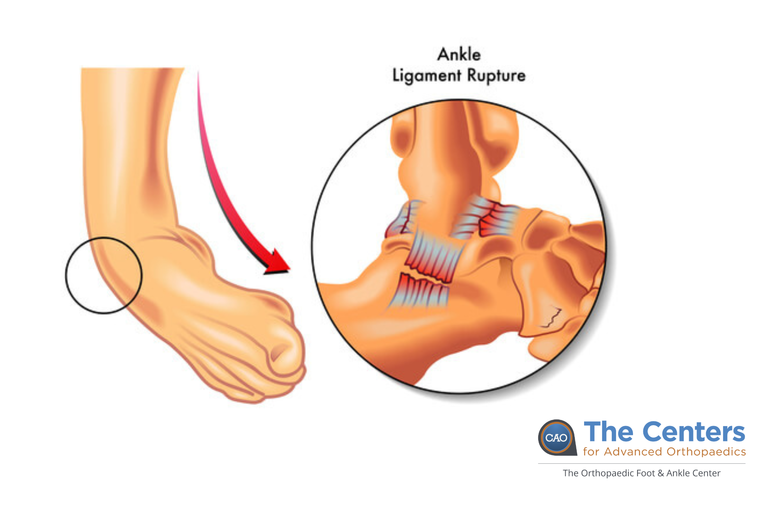The Centers for Advanced Orthopaedics is redefining the way musculoskeletal care is delivered across the region with locations throughout Maryland, DC, Virginia and Pennsylvania.
What is Chronic Ankle Instability?

Chronic ankle instability is a condition characterized by a recurring “giving away” of the outer (lateral) side of the ankle. This condition often develops after repeated ankle sprains. Usually the “giving away” occurs while walking or doing other activities, but it can also happen when you’re just standing. Many athletes, as well as others, suffer from chronic ankle instability.
People with chronic ankle instability often complain of:
- A repeated turning of the ankle, especially on uneven surfaces or when participating in sports.
- Persistent (chronic) discomfort and swelling
- Pain or tenderness
- Feeling like the ankle will “give out”
What causes it?
Chronic ankle instability usually develops following an ankle sprain that has not adequately healed or was not rehabilitated completely. When you sprain your ankle, the connective tissues (ligaments) are stretched or torn. The ability to balance is often affected. Proper rehabilitation is needed to strengthen the muscles within the ankle that affect balance.
Repeated ankle sprains often cause, and perpetuate, chronic ankle instability. Having an ankle that gives way increases your chances of spraining your ankle repeatedly. Each subsequent sprain leads to further weakening (or stretching) of the ligaments, resulting in greater instability and the likelihood of developing additional problems in the ankle.
Evaluation and Diagnosis
If your ankle feels wobbly or unstable and gives way repeatedly, or if you’ve had recurring ankle sprains, see an orthopedic foot and ankle specialist to have your condition evaluated and treated. Chronic ankle instability that is left untreated leads to continued instability, activity limitations, arthritis, and tendon problems.
In evaluating and diagnosing your condition, you doctor will ask you about any previous ankle injuries and instability. Then they will examine your ankle to check for tender areas, signs of swelling, and instability of your ankle as shown in the illustration. X-rays, CT scans, or MRI may be helpful in further evaluating the ankle.


Treatment Options
Treatment for chronic ankle instability is based on the results of the examination and tests, as well as on the patient’s level of activity.
Non-Surgical treatment may include:
- Physical therapy. Physical therapy involves various treatments and exercises to strengthen the ankle, improve balance and range of motion, and retain your muscles. As you progress through rehabilitation, you may also receive training that relates specifically to your activities or sport.
- Bracing. Some patients wear an ankle brace to gain support for the ankle and keep the ankle from turning. Bracing also helps prevent additional ankle sprains.
- Medications. Nonsteroidal anti-inflammatory drugs (NSAIDS), such as ibuprofen, may be prescribed to reduce pain and inflammation.
In some cases, your doctor will recommend surgery based on the degree of instability or lack or response to non-surgical approaches. Surgical options mainly involve repair or reconstruction of the damaged ligaments. However, other soft tissue or bone procedures may be necessary depending on the severity of your condition and whether you have other problems in the foot and ankle. The length of the recovery period will vary, depending on the procedure or procedures performed.
For those experiencing chronic ankle instability, seeking treatment from a foot and ankle orthopedic physician is recommended. The Orthopaedic Foot & Ankle Center specializes in diagnosing and treating conditions such as ankle instability. Our experienced team can offer a comprehensive evaluation and customized treatment options to address your specific concerns. Call or book your appointment online today.